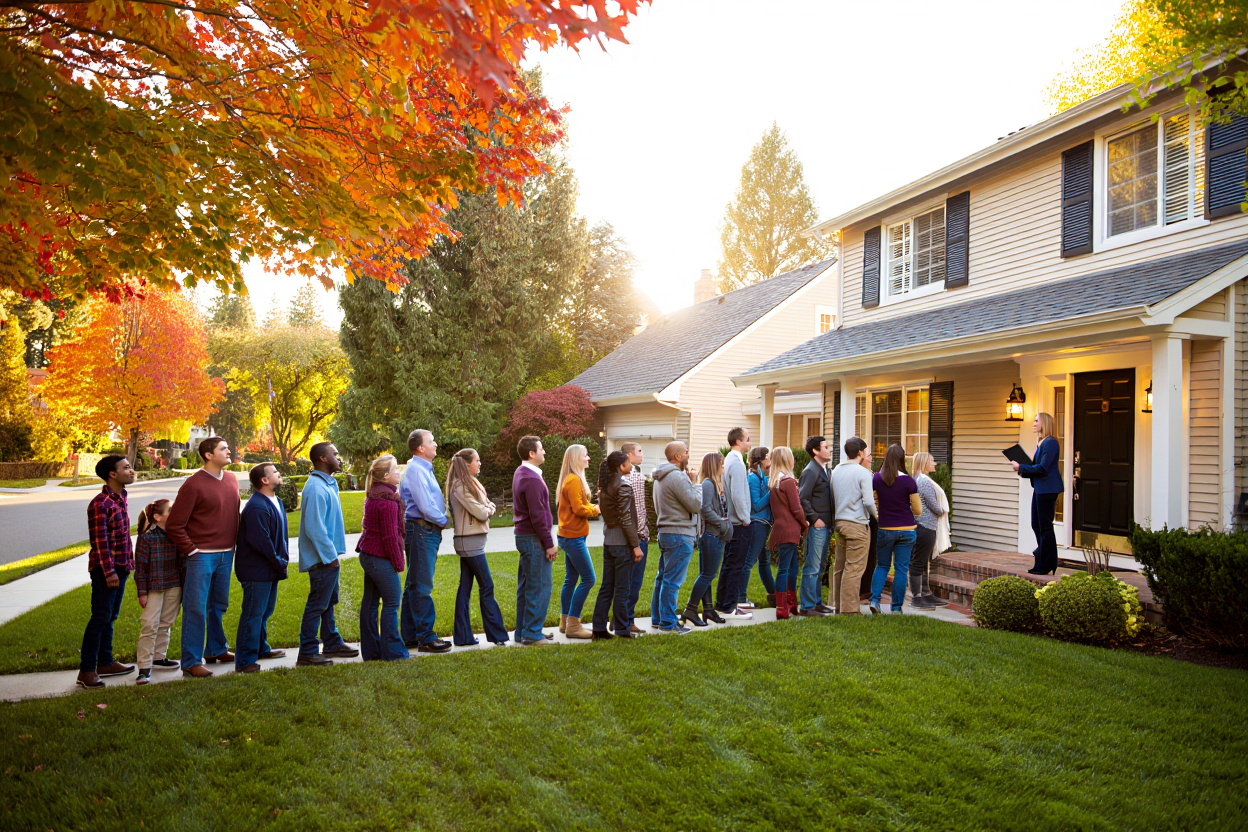Brought to you by Scott P. Rogers, Funkhouser Real Estate Group, 540-578-0102, scott@HarrisonburgHousingToday.com
Brought to you by Scott P. Rogers, Funkhouser Real Estate Group, 540-578-0102, scott@HarrisonburgHousingToday.com
Wednesday, October 8, 2025

A recent sale in your neighborhood might have caught your attention -- a 2,000 square foot home that was listed for $385,000 and had 15 showings and 10 offers in just a few days.
That kind of activity is exciting to see -- especially if you're planning to sell your home soon.
But what if your home is larger -- say, 2,800 square feet?
It's only natural to assume your house should sell for quite a bit more. After all, you're offering 800 more square feet -- more room to spread out, more value, right?
Maybe.
Certainly, your home should be priced higher than $385K, given the additional space. But the real question becomes... how much higher? And what impact will that higher price point have on how much interest your home receives?
The Temptation to Price High
You might look at the gap in size and reasonably think your home should be priced at $450K or even $485K.
And it's possible that it will sell at one of those price points -- based on square footage, finishes, updates, and other features.
But... it's important to keep in mind that the $385K home likely generated as much interest as it did because of its price point. It was more accessible to a wider pool of buyers, and that price point likely contributed to the high number of showings and offers.
So... if you price your home $65K or $100K higher, should you still expect 15 showings and 10 offers?
More Space, Fewer Buyers?
Maybe your home will still attract a ton of interest -- especially if it's beautifully maintained, has appealing updates, and offers great space. A larger home in the same neighborhood will naturally appeal to buyers who want more room.
But... maybe not.
As your price point increases, the number of buyers qualified (and willing) to buy at that price point tends to decrease. There are simply fewer buyers ready to pay $450K for a house than there are willing to pay $385K.
After all, it's not always just about value, it's also about the affordability (or not) of that monthly mortgage payment.
So, if you're pricing your home based on a recent sale in your neighborhood, especially one that had lots of buyer activity, remember this...
A lower price point often brings a wider audience. As you move higher in price, it's likely that the number of showings and potential offers will decrease -- even if your home is certainly worth more.
The key is to strike the right balance -- price your home so that you're not leaving money on the table, but so that you're still attracting enough buyer interest to generate the number of showings and offers that will result in a successful sale.
That kind of activity is exciting to see -- especially if you're planning to sell your home soon.
But what if your home is larger -- say, 2,800 square feet?
It's only natural to assume your house should sell for quite a bit more. After all, you're offering 800 more square feet -- more room to spread out, more value, right?
Maybe.
Certainly, your home should be priced higher than $385K, given the additional space. But the real question becomes... how much higher? And what impact will that higher price point have on how much interest your home receives?
The Temptation to Price High
You might look at the gap in size and reasonably think your home should be priced at $450K or even $485K.
And it's possible that it will sell at one of those price points -- based on square footage, finishes, updates, and other features.
But... it's important to keep in mind that the $385K home likely generated as much interest as it did because of its price point. It was more accessible to a wider pool of buyers, and that price point likely contributed to the high number of showings and offers.
So... if you price your home $65K or $100K higher, should you still expect 15 showings and 10 offers?
More Space, Fewer Buyers?
Maybe your home will still attract a ton of interest -- especially if it's beautifully maintained, has appealing updates, and offers great space. A larger home in the same neighborhood will naturally appeal to buyers who want more room.
But... maybe not.
As your price point increases, the number of buyers qualified (and willing) to buy at that price point tends to decrease. There are simply fewer buyers ready to pay $450K for a house than there are willing to pay $385K.
After all, it's not always just about value, it's also about the affordability (or not) of that monthly mortgage payment.
So, if you're pricing your home based on a recent sale in your neighborhood, especially one that had lots of buyer activity, remember this...
A lower price point often brings a wider audience. As you move higher in price, it's likely that the number of showings and potential offers will decrease -- even if your home is certainly worth more.
The key is to strike the right balance -- price your home so that you're not leaving money on the table, but so that you're still attracting enough buyer interest to generate the number of showings and offers that will result in a successful sale.
